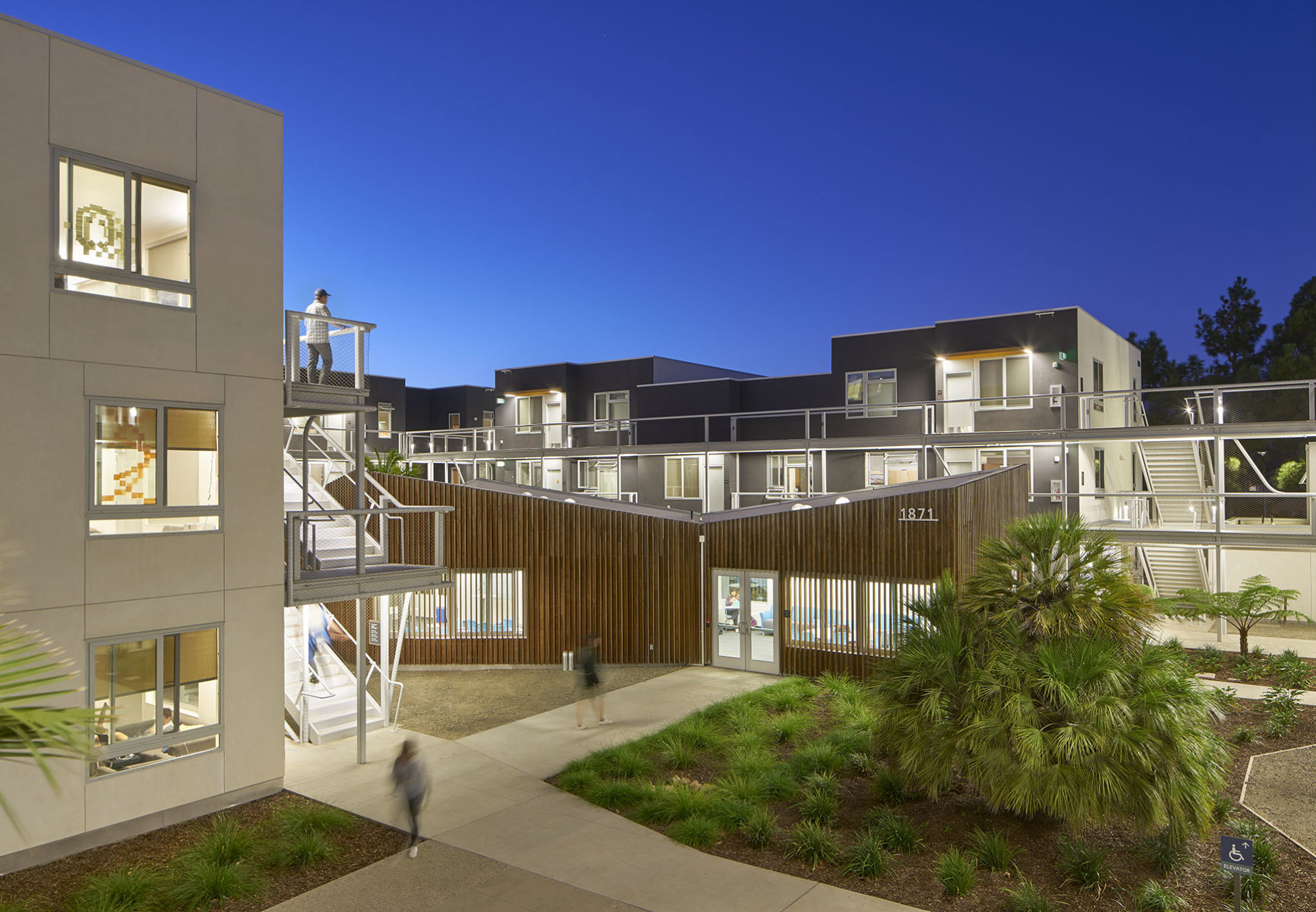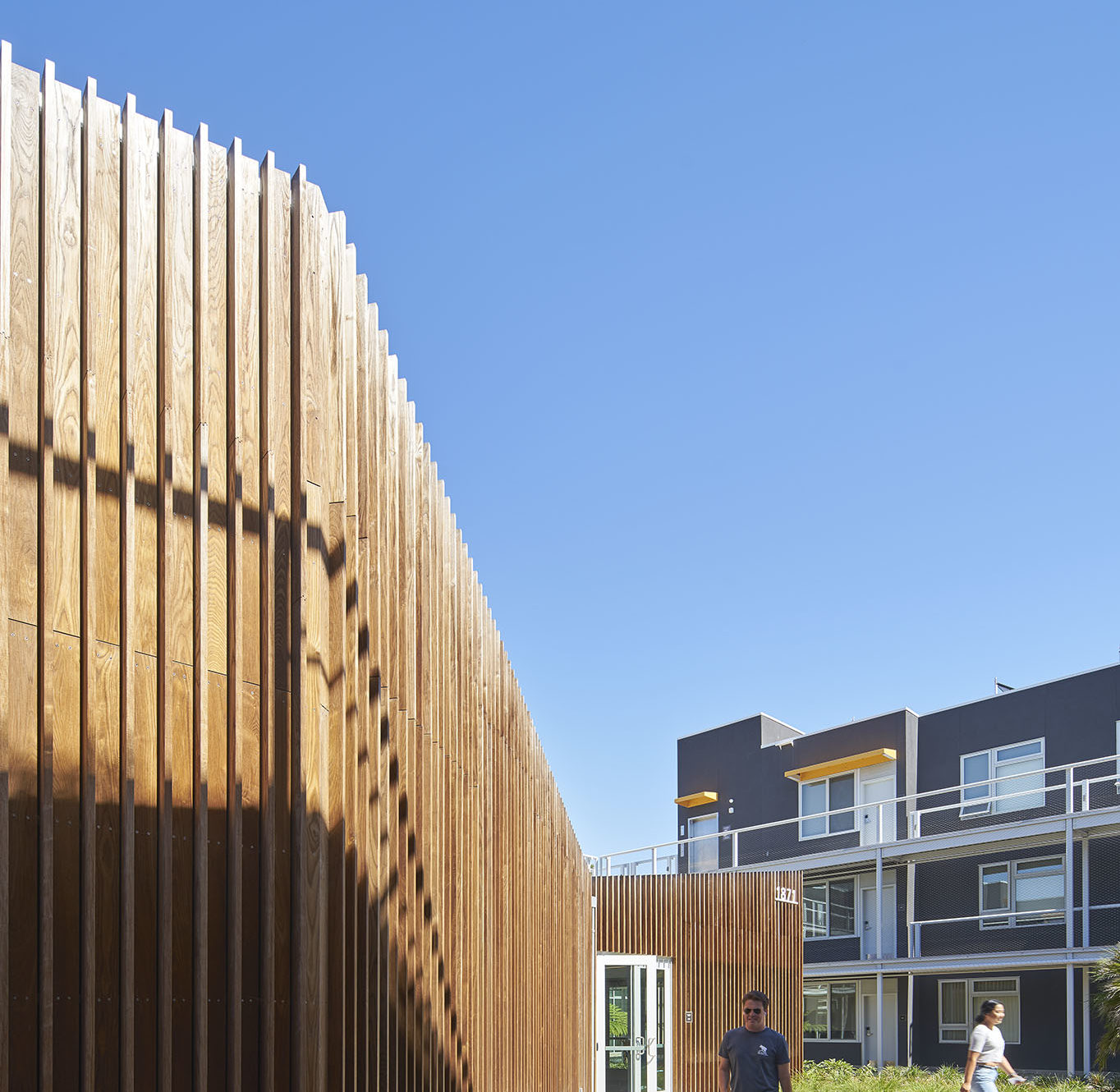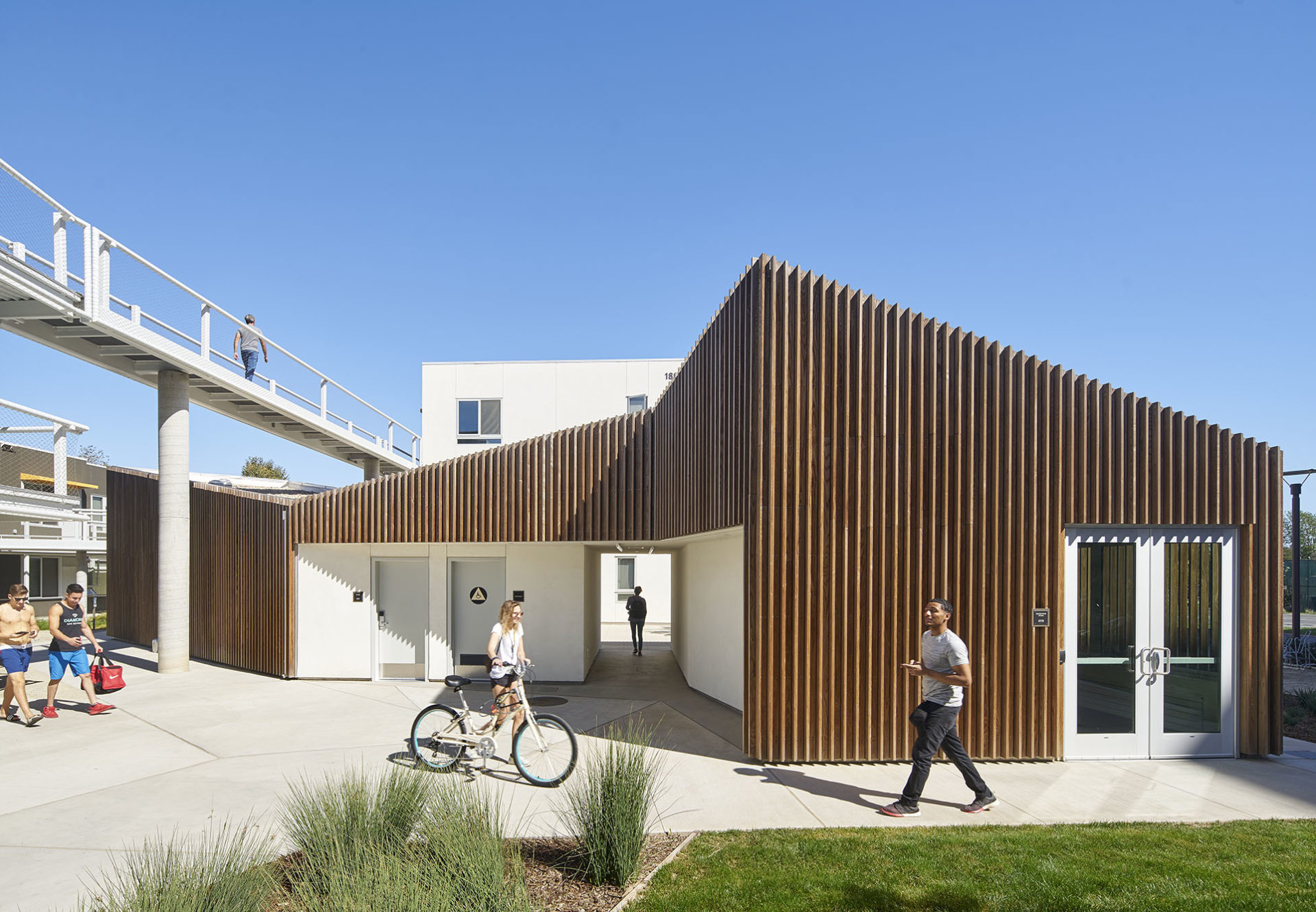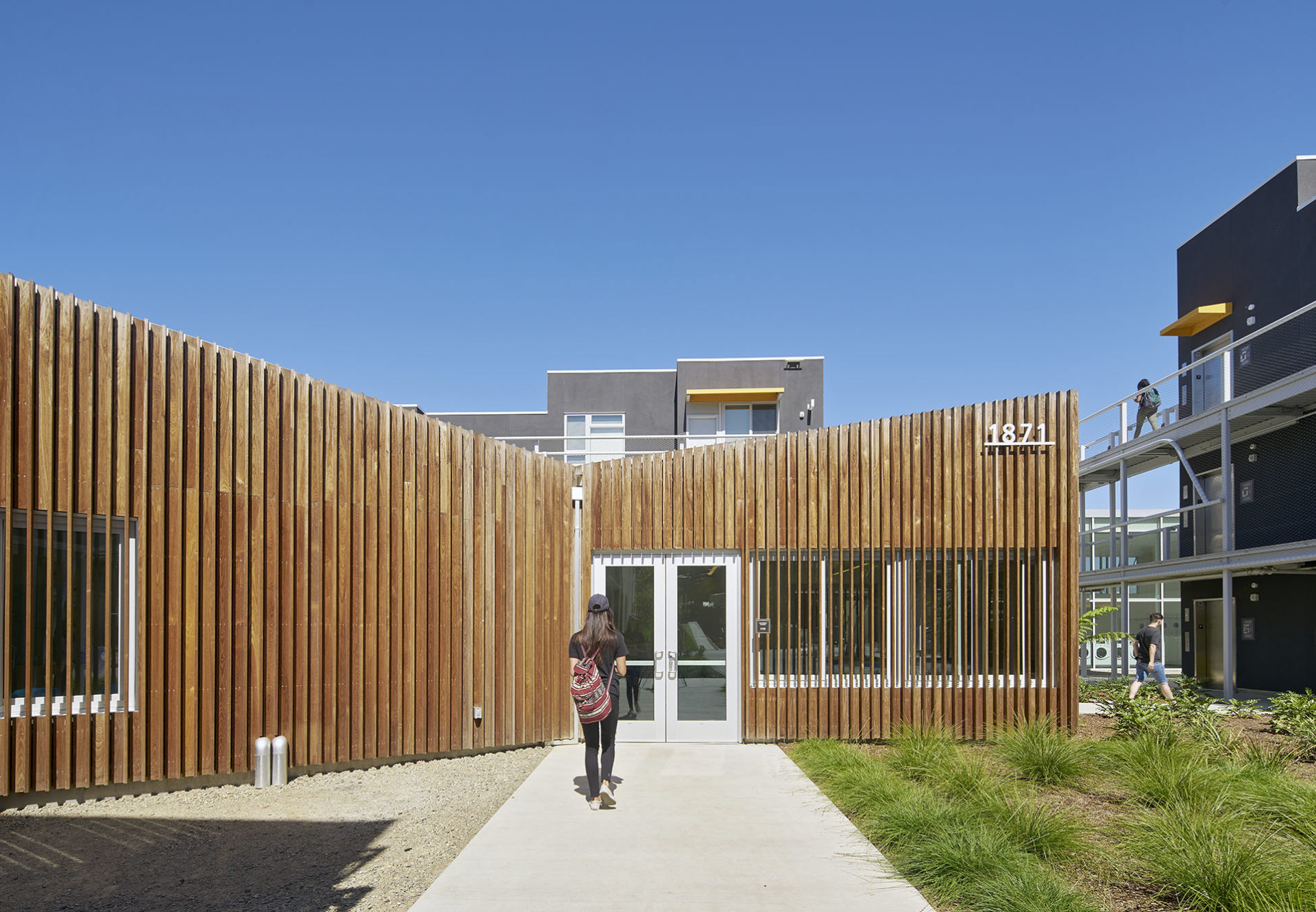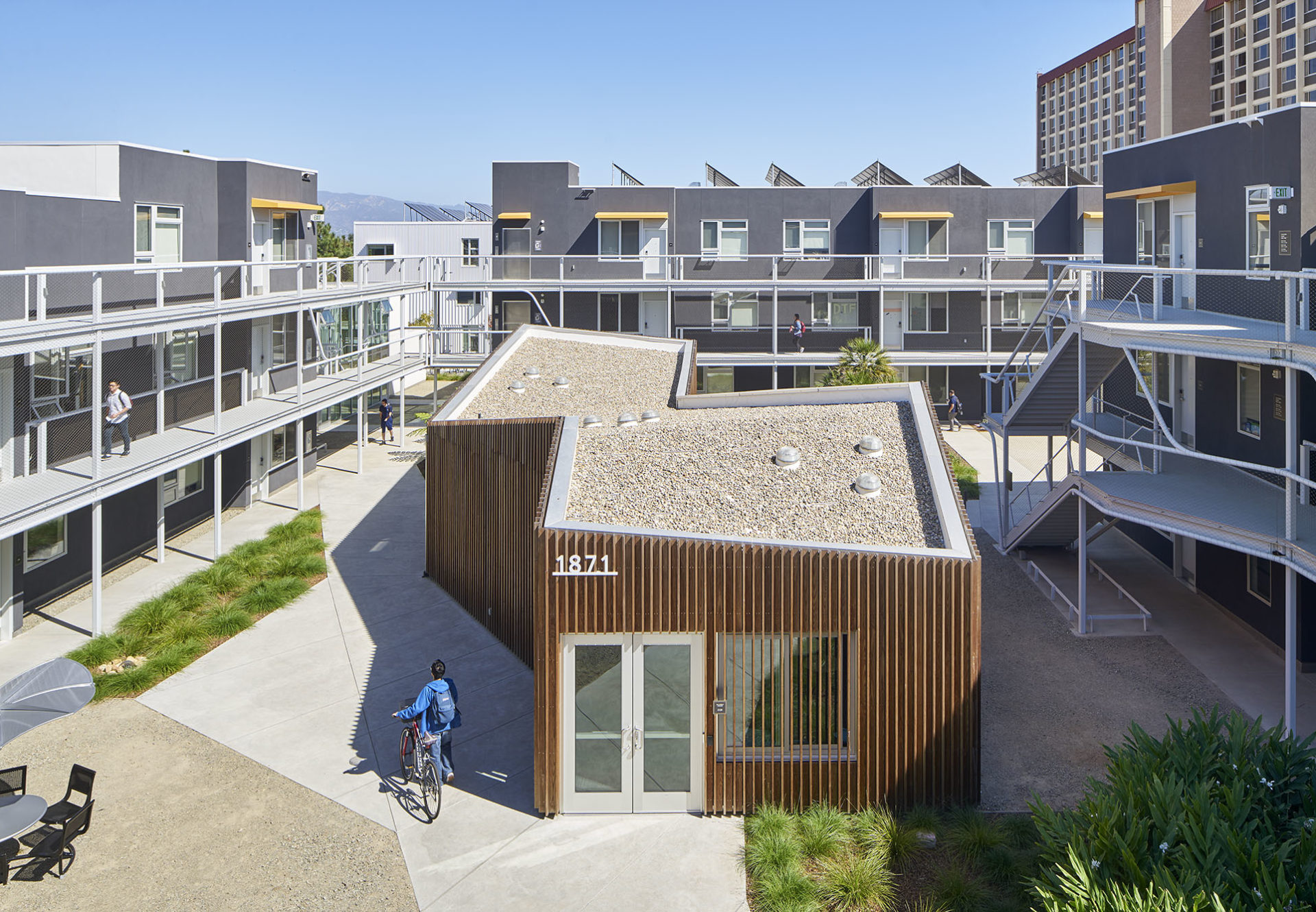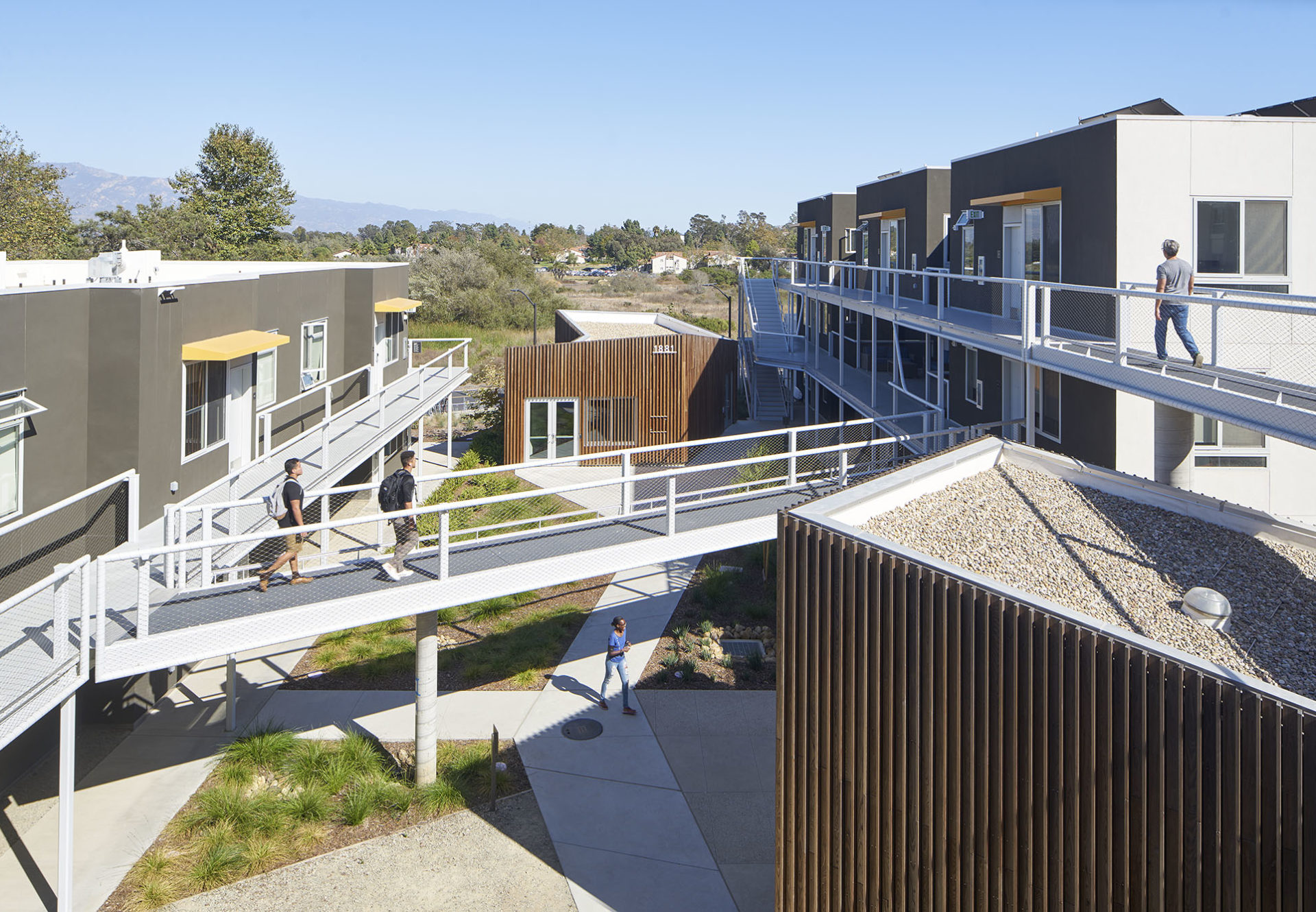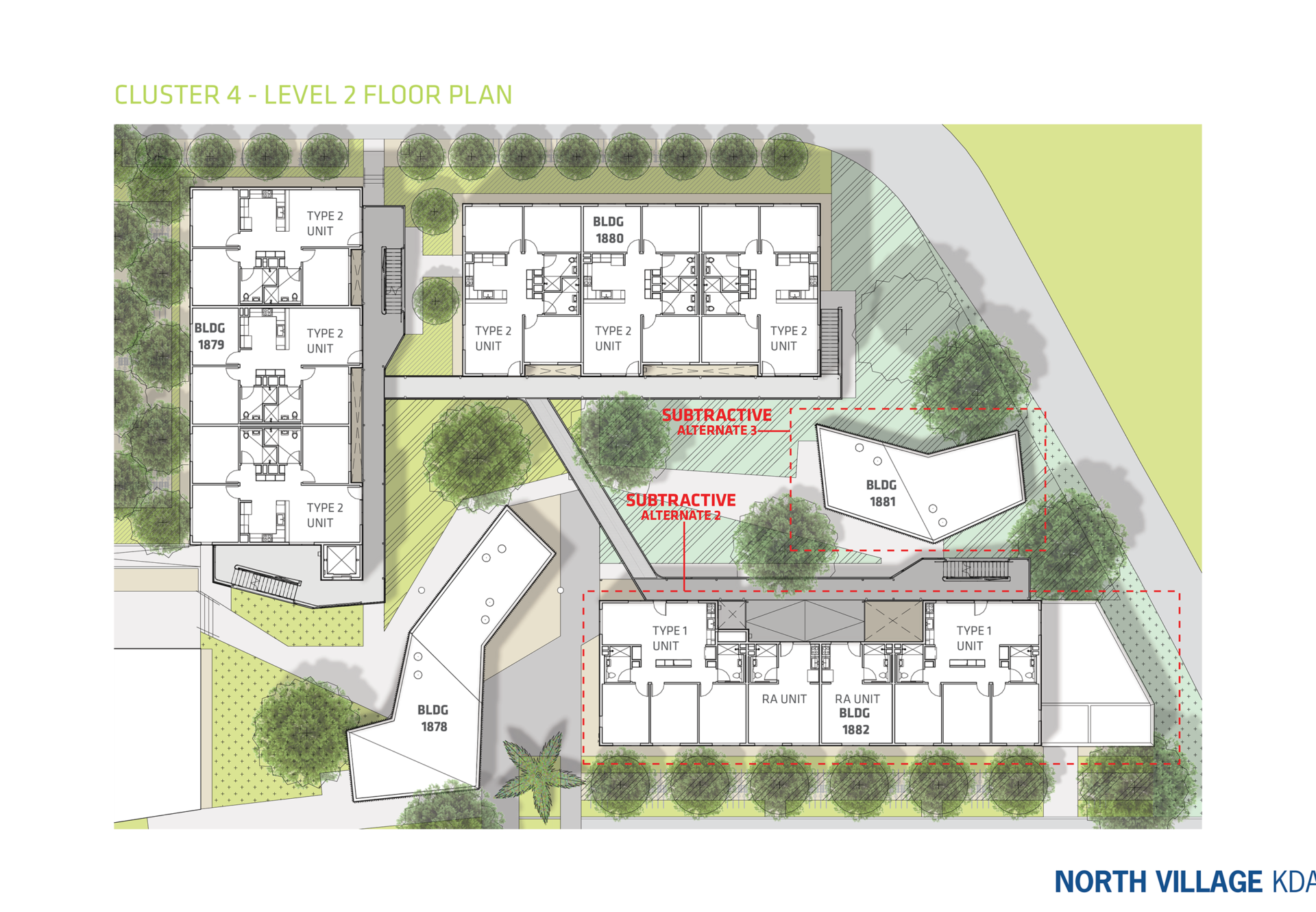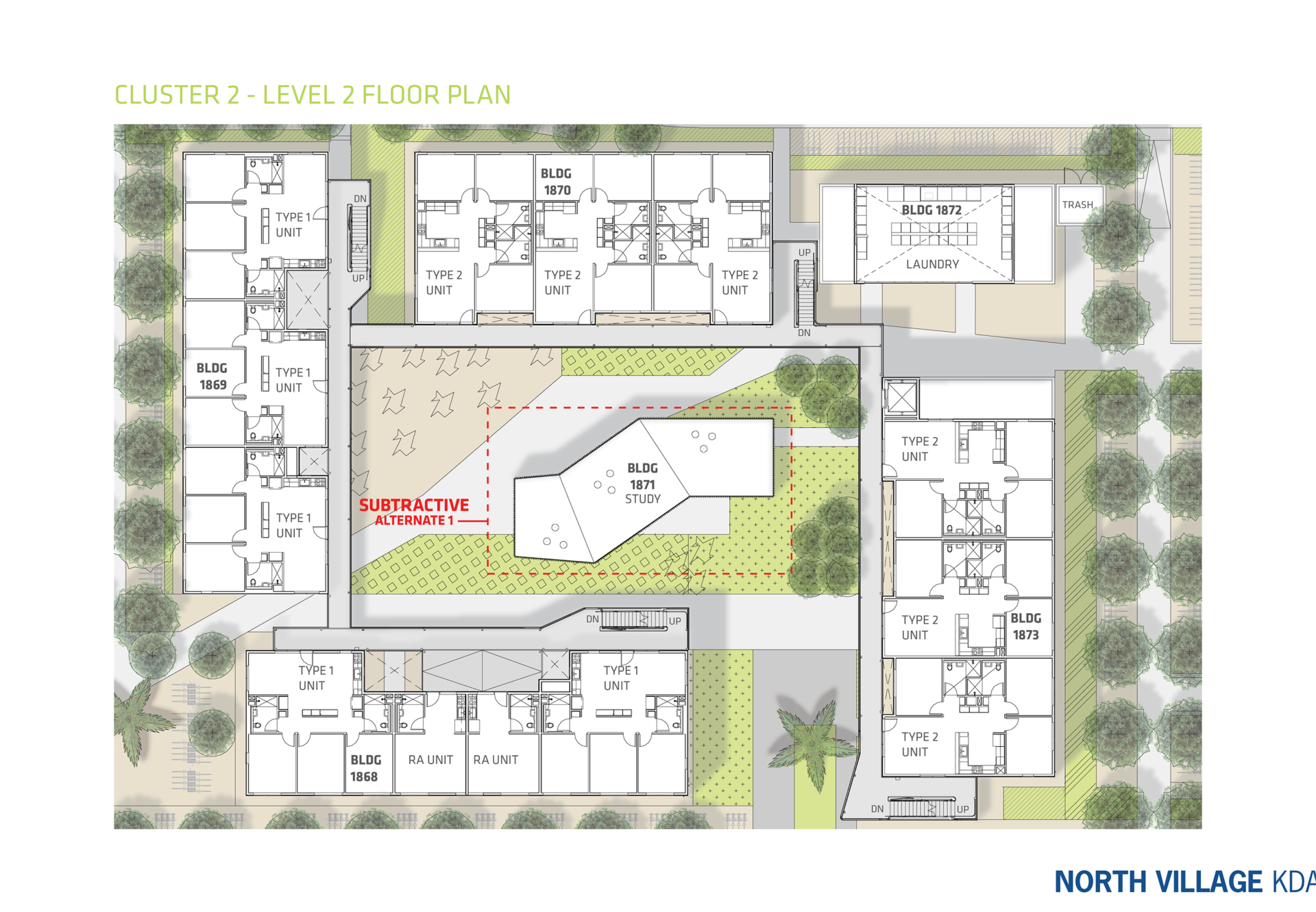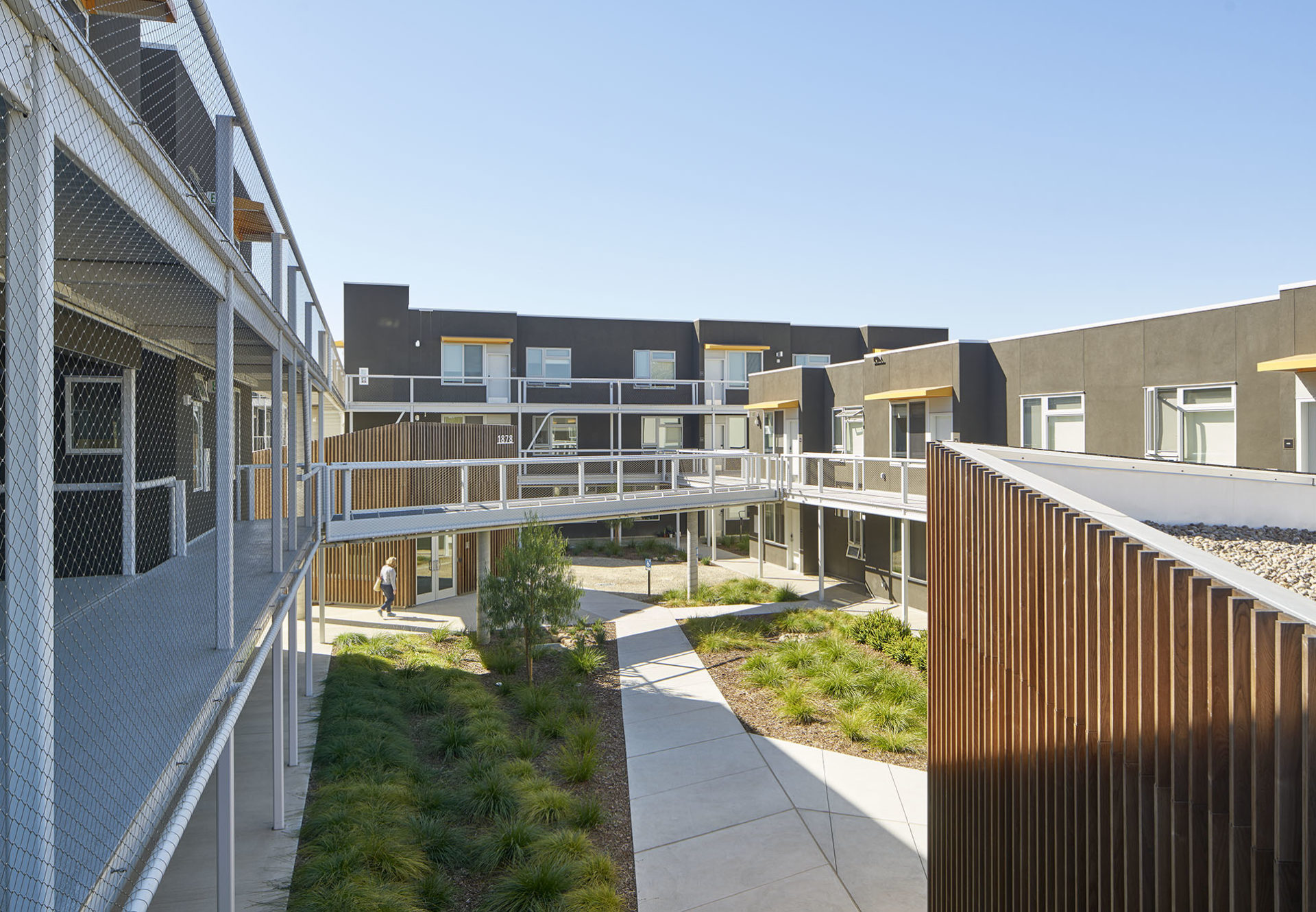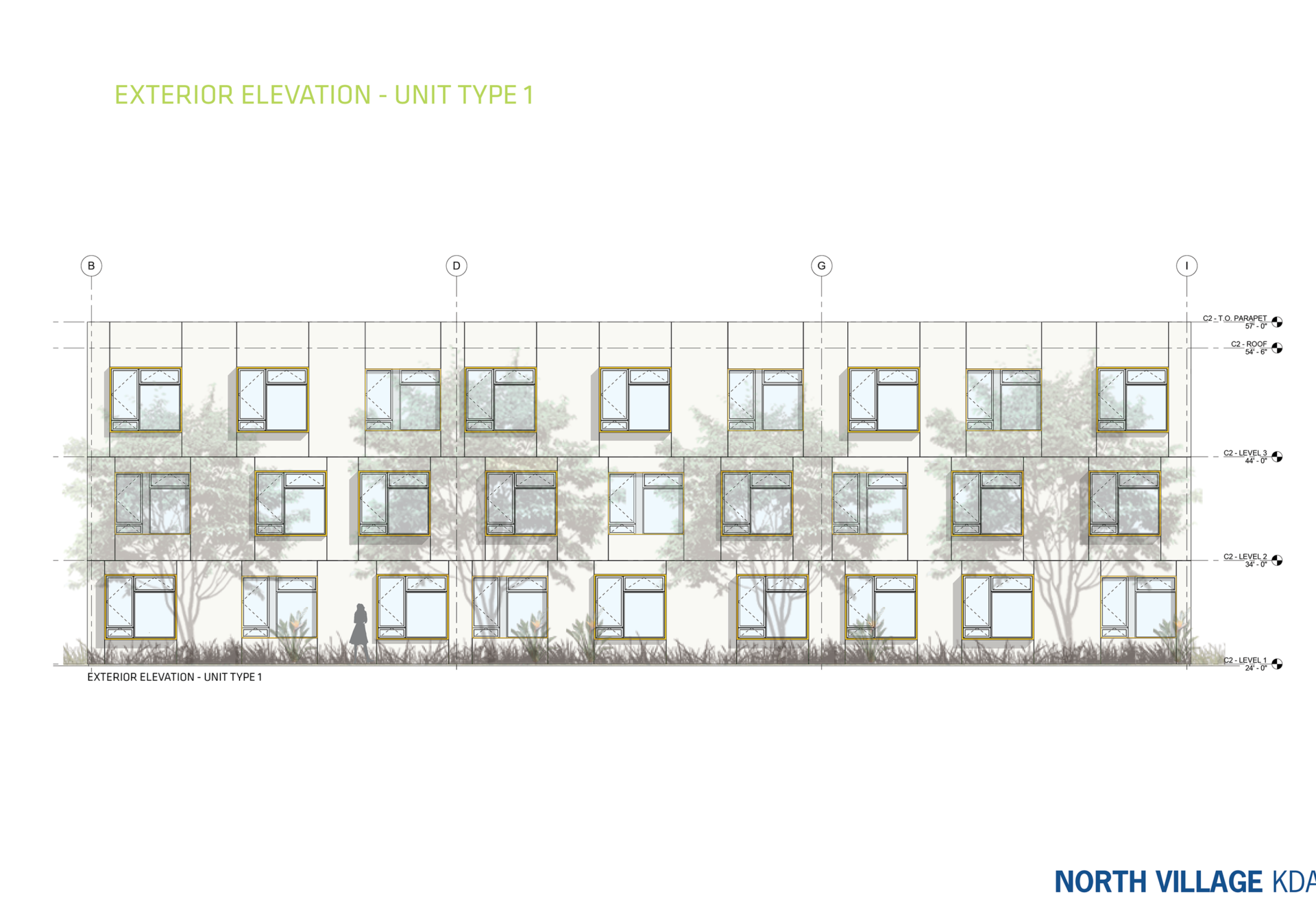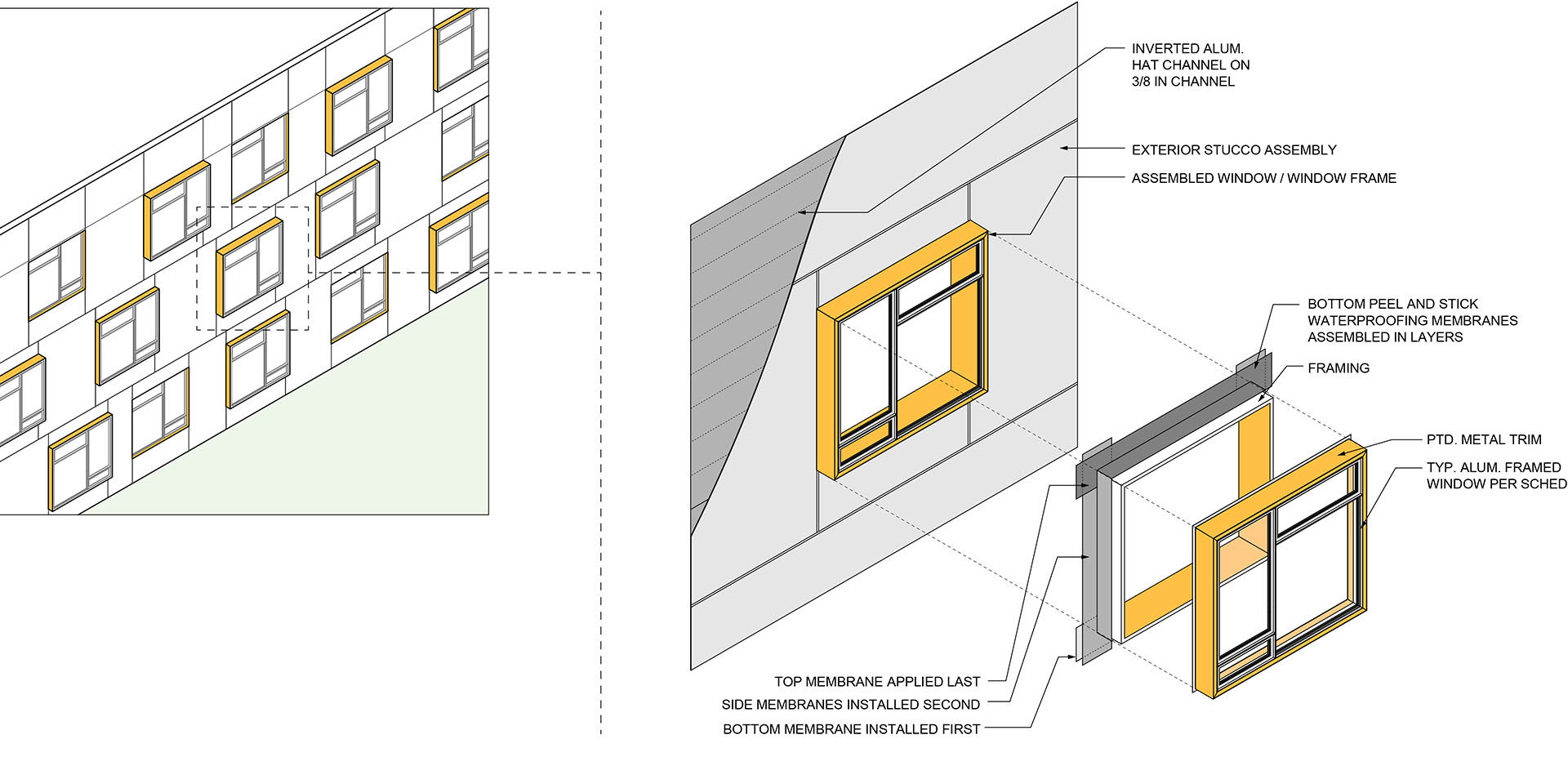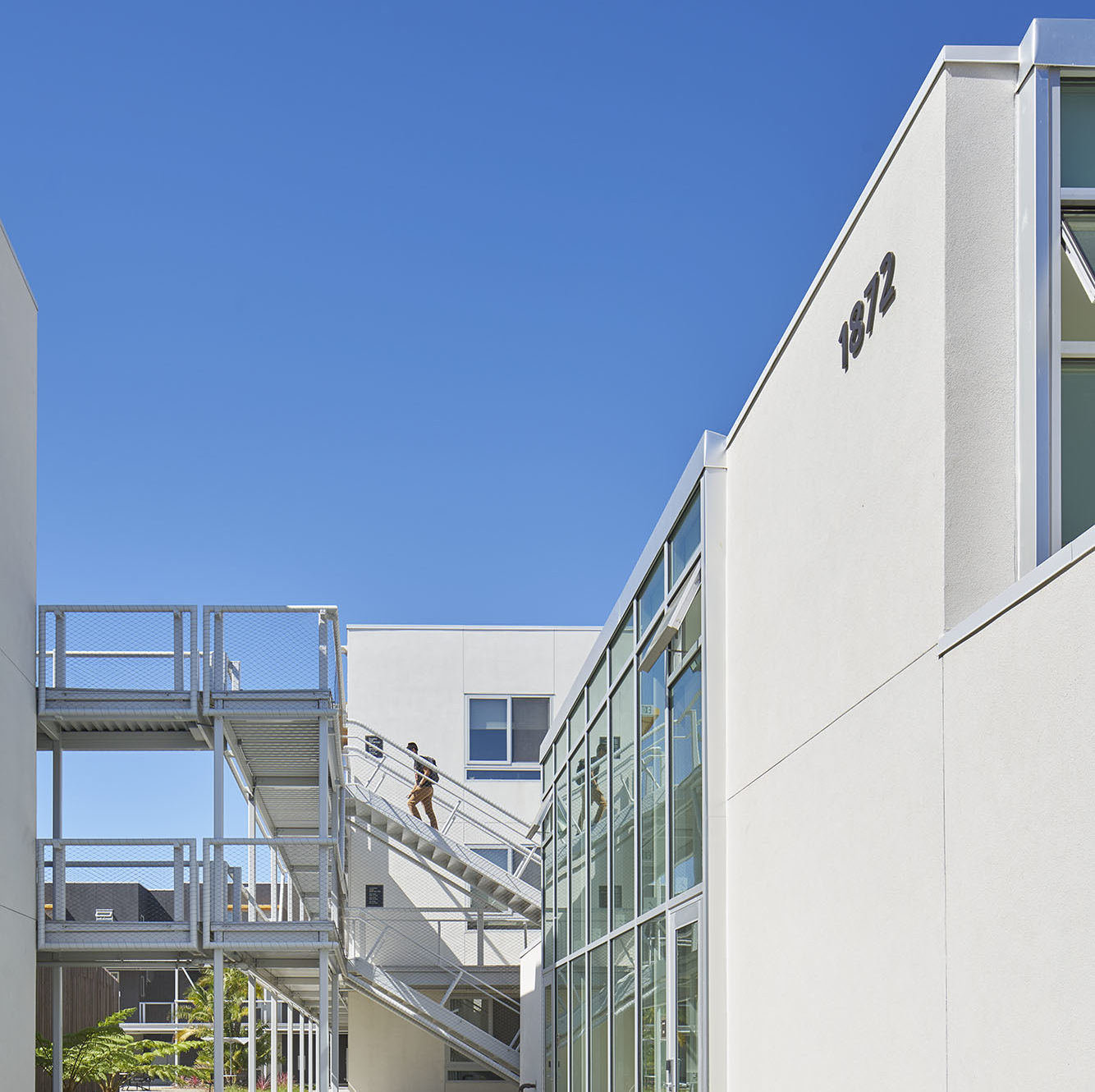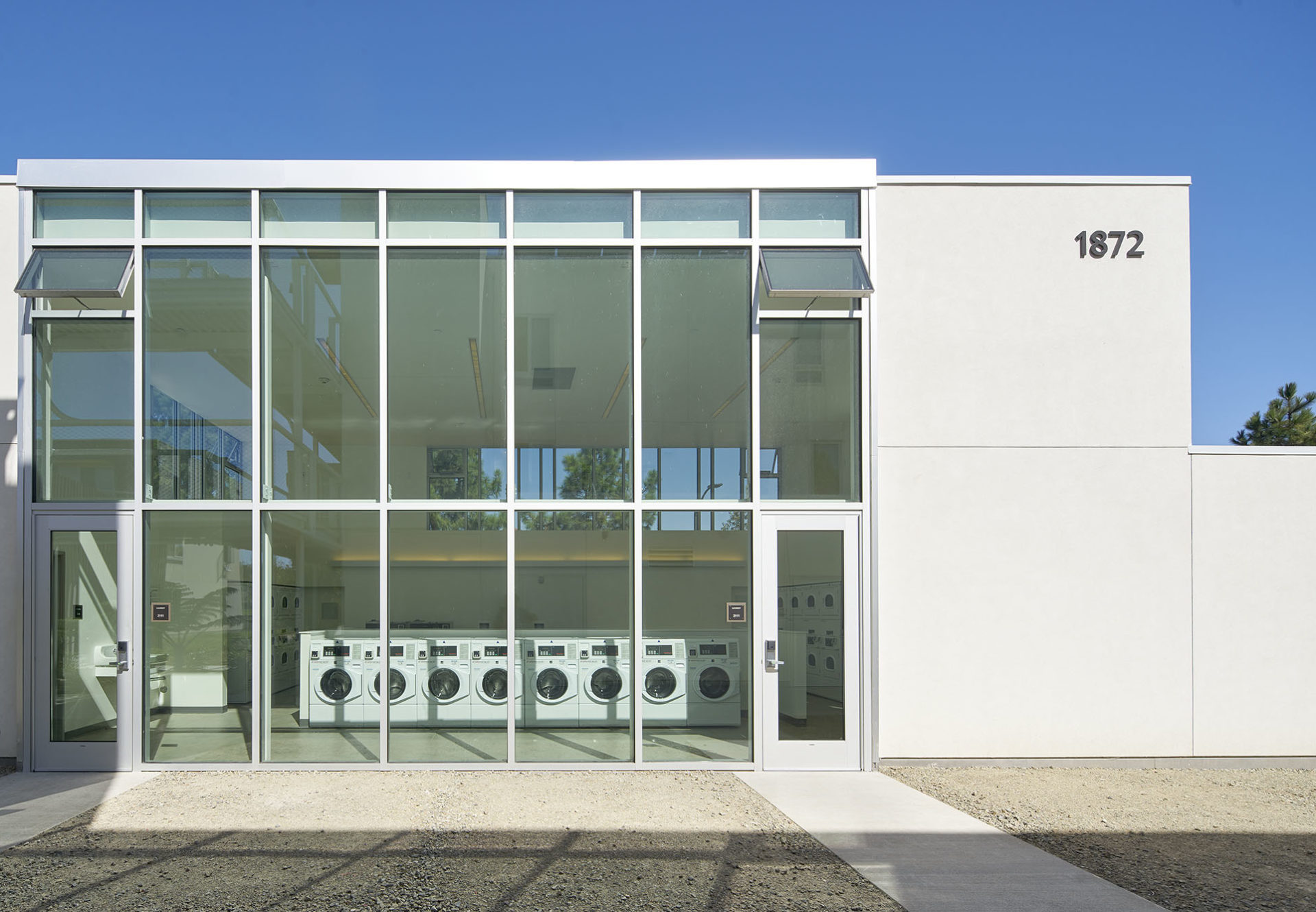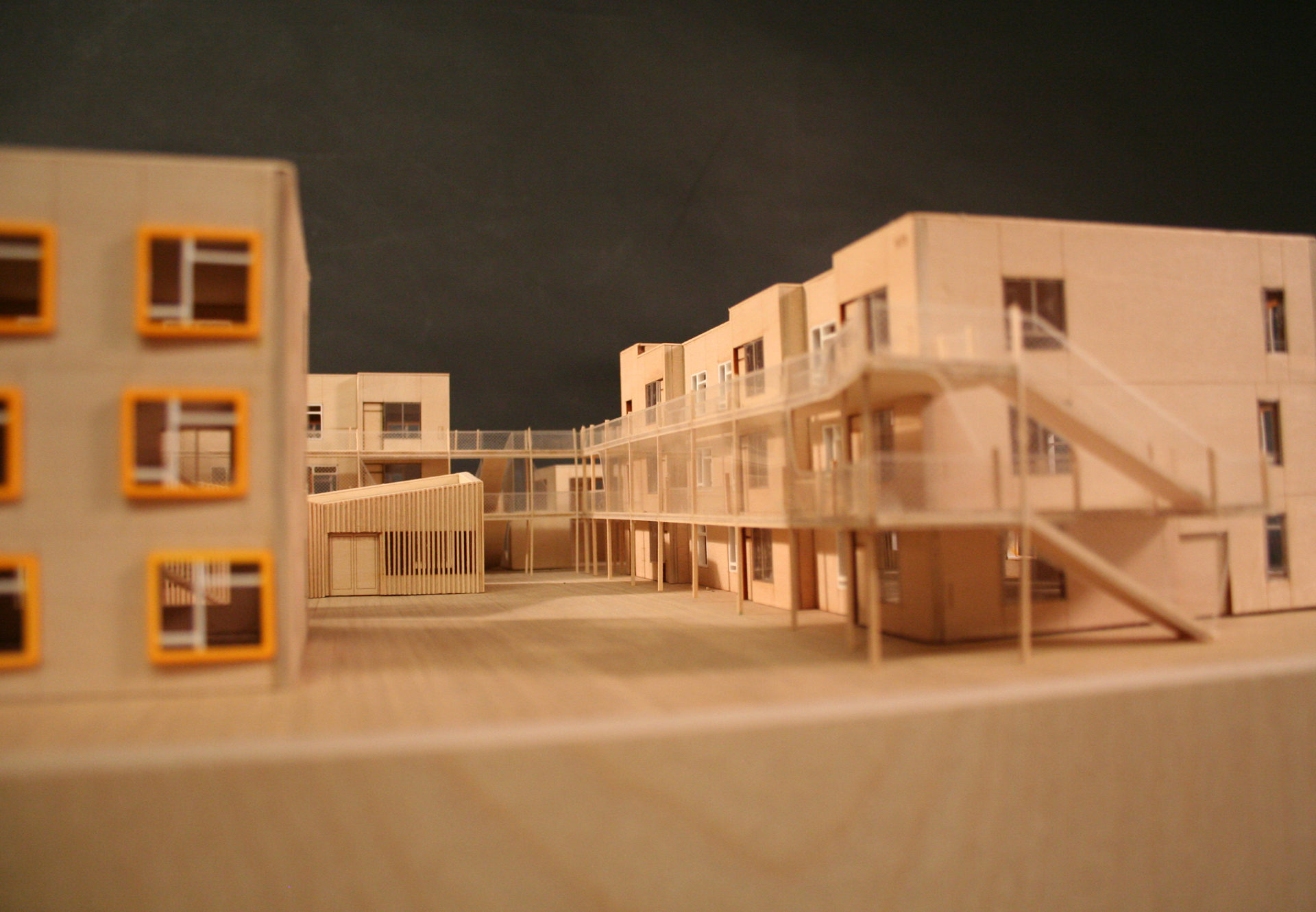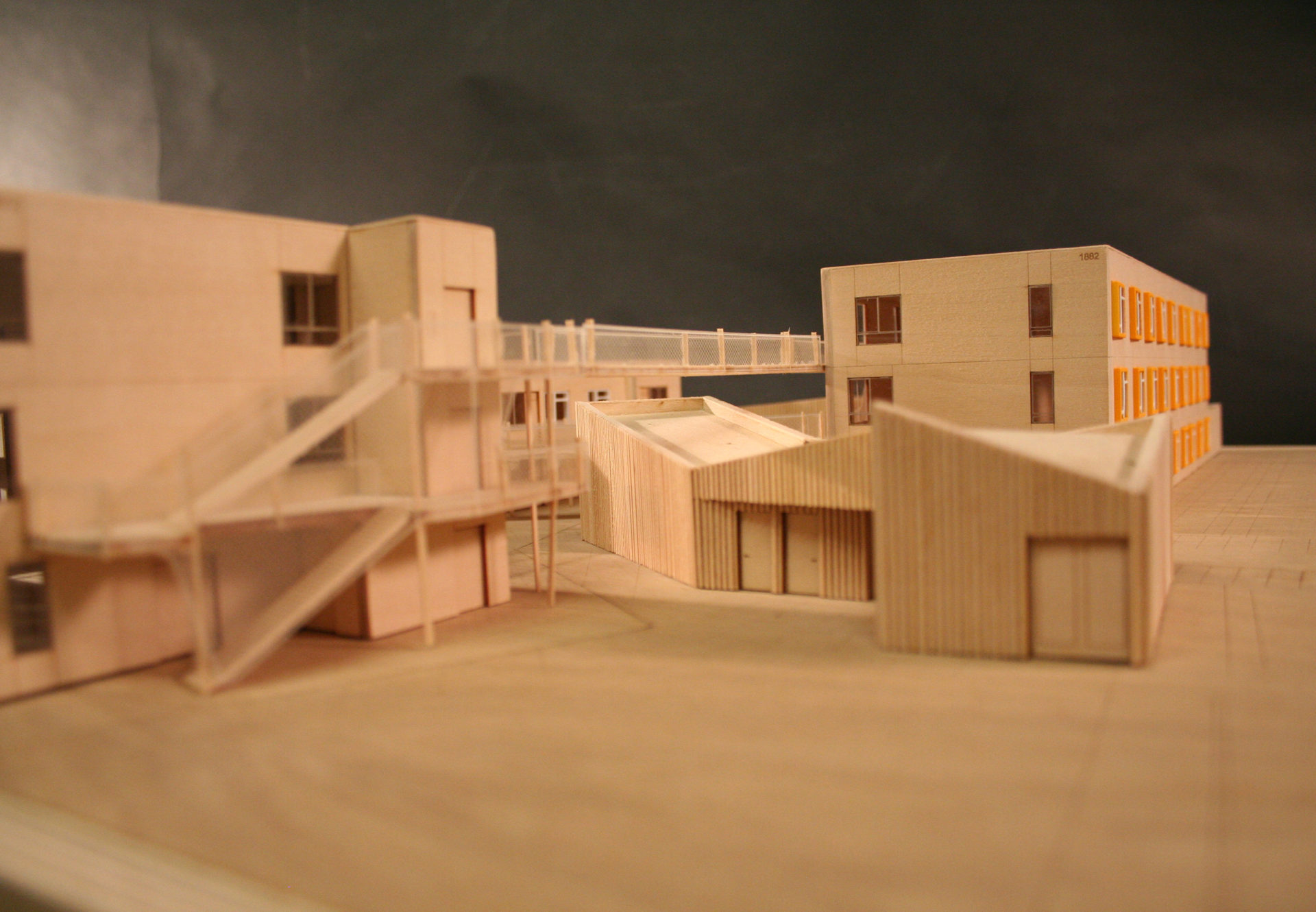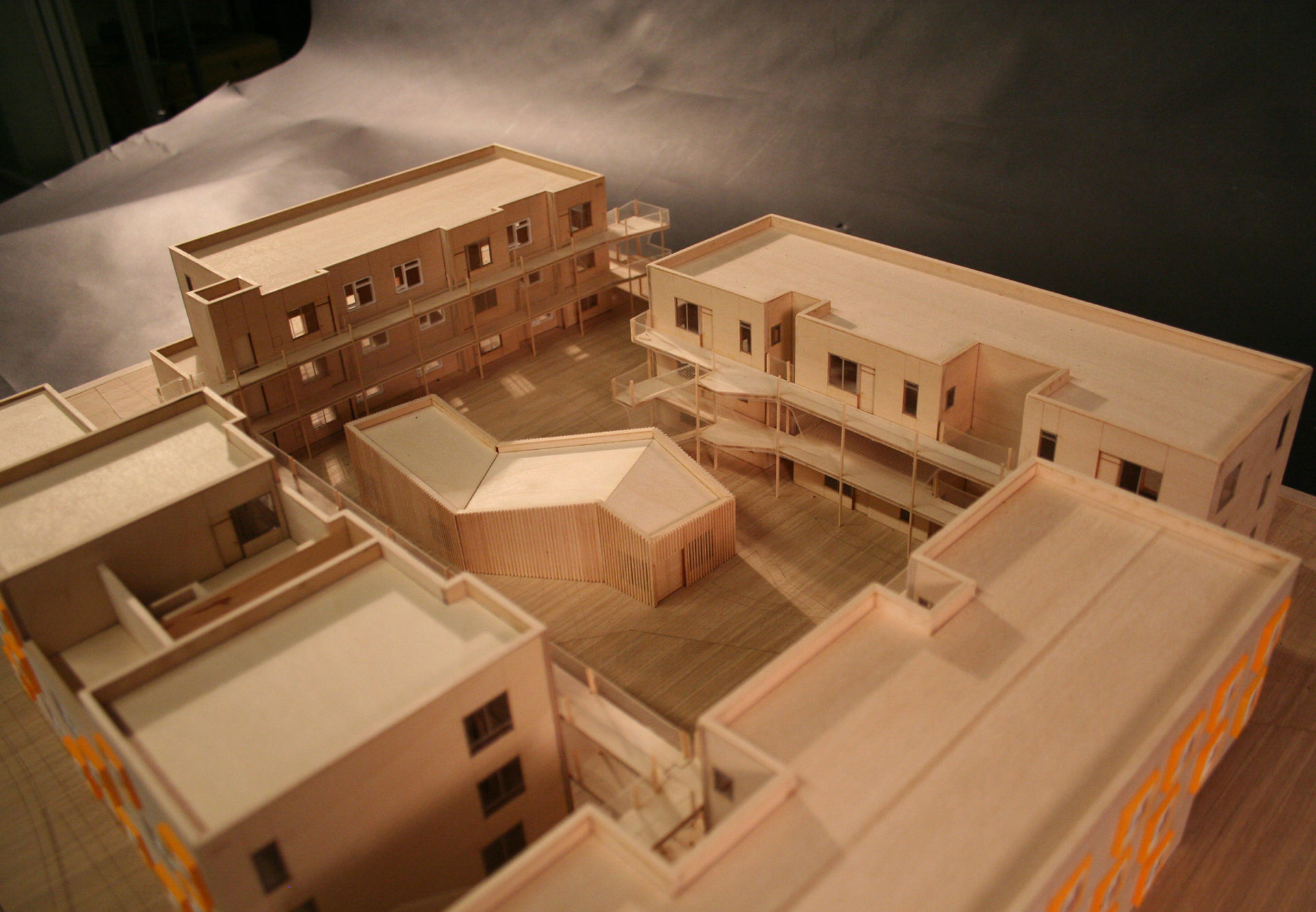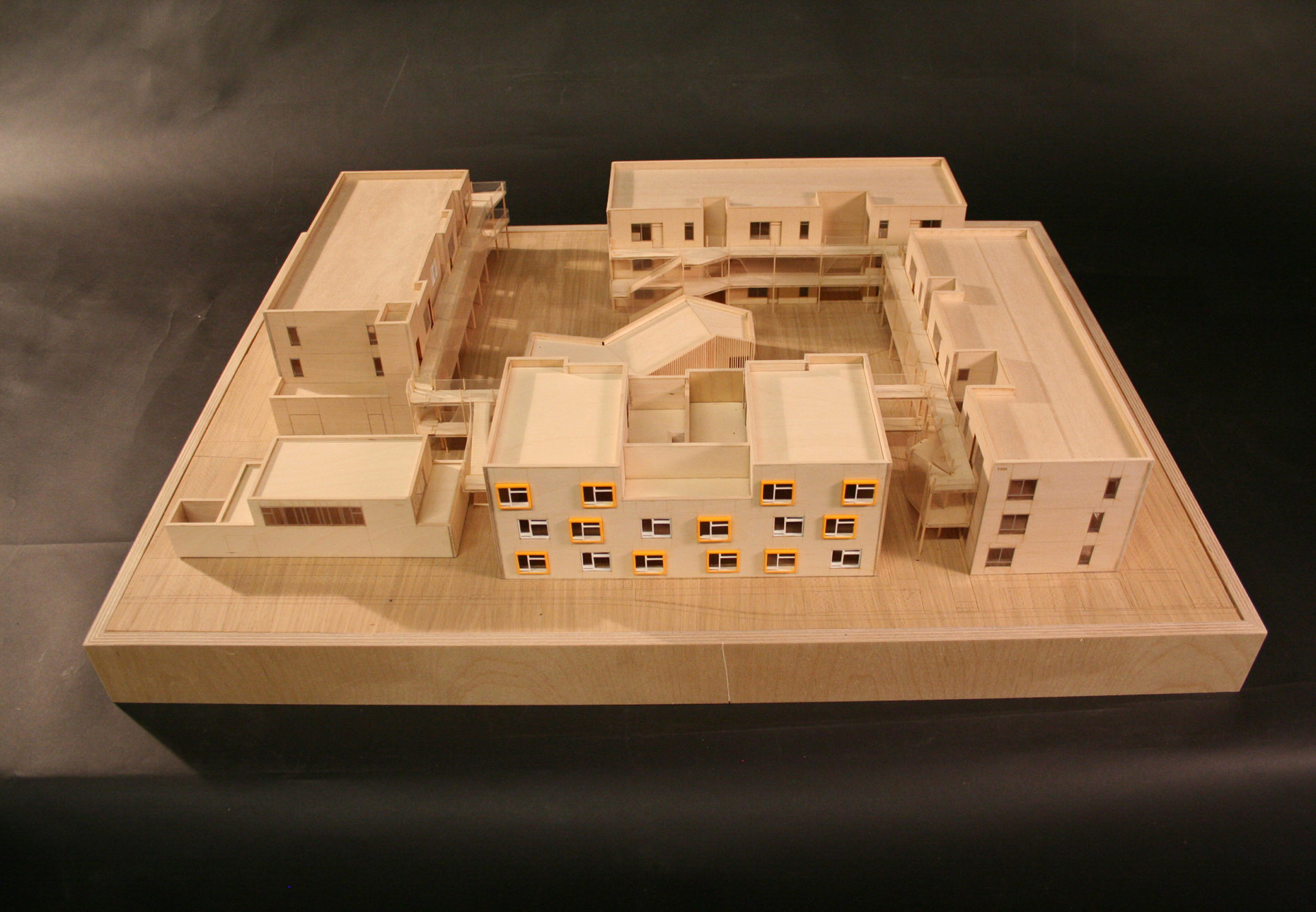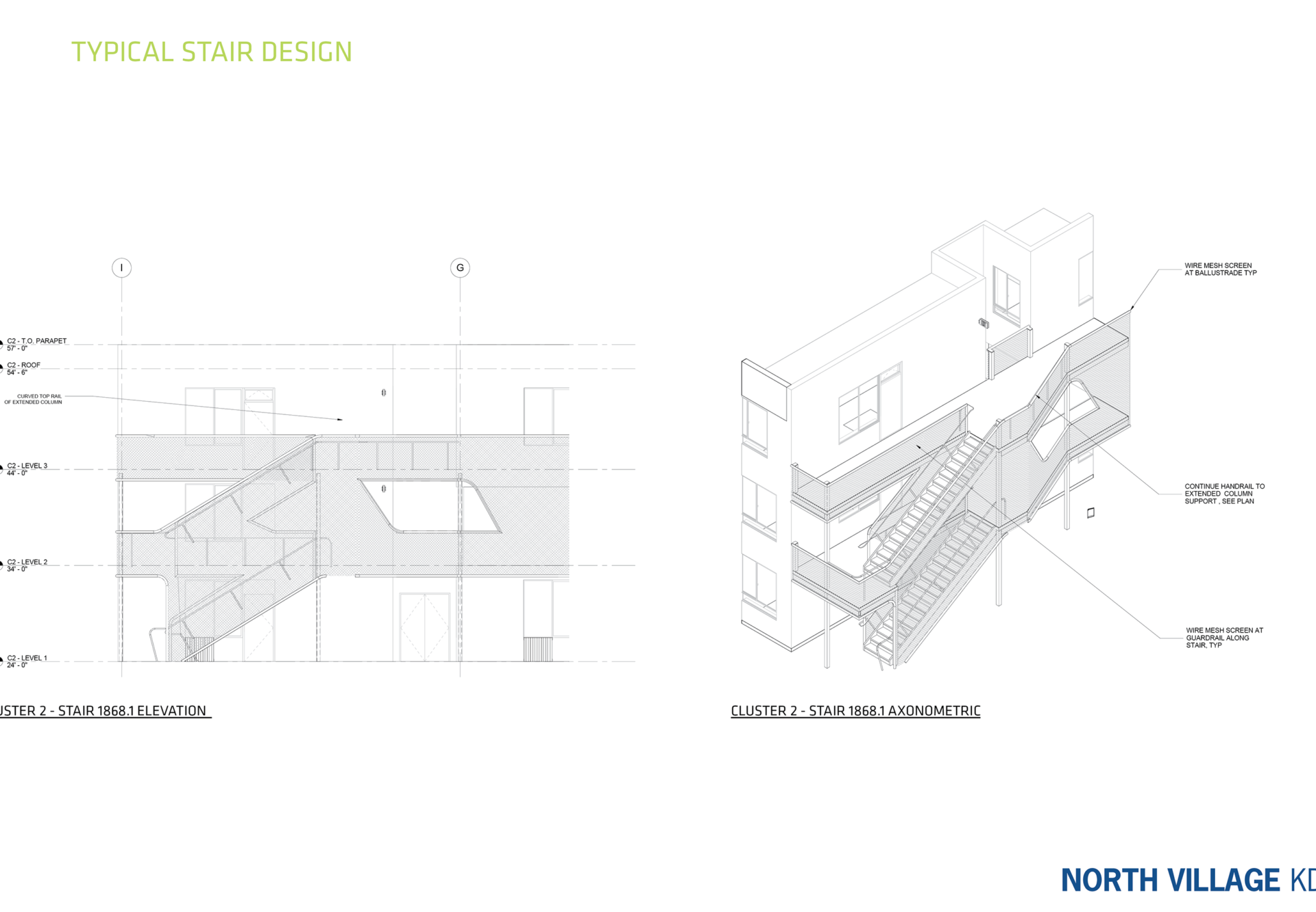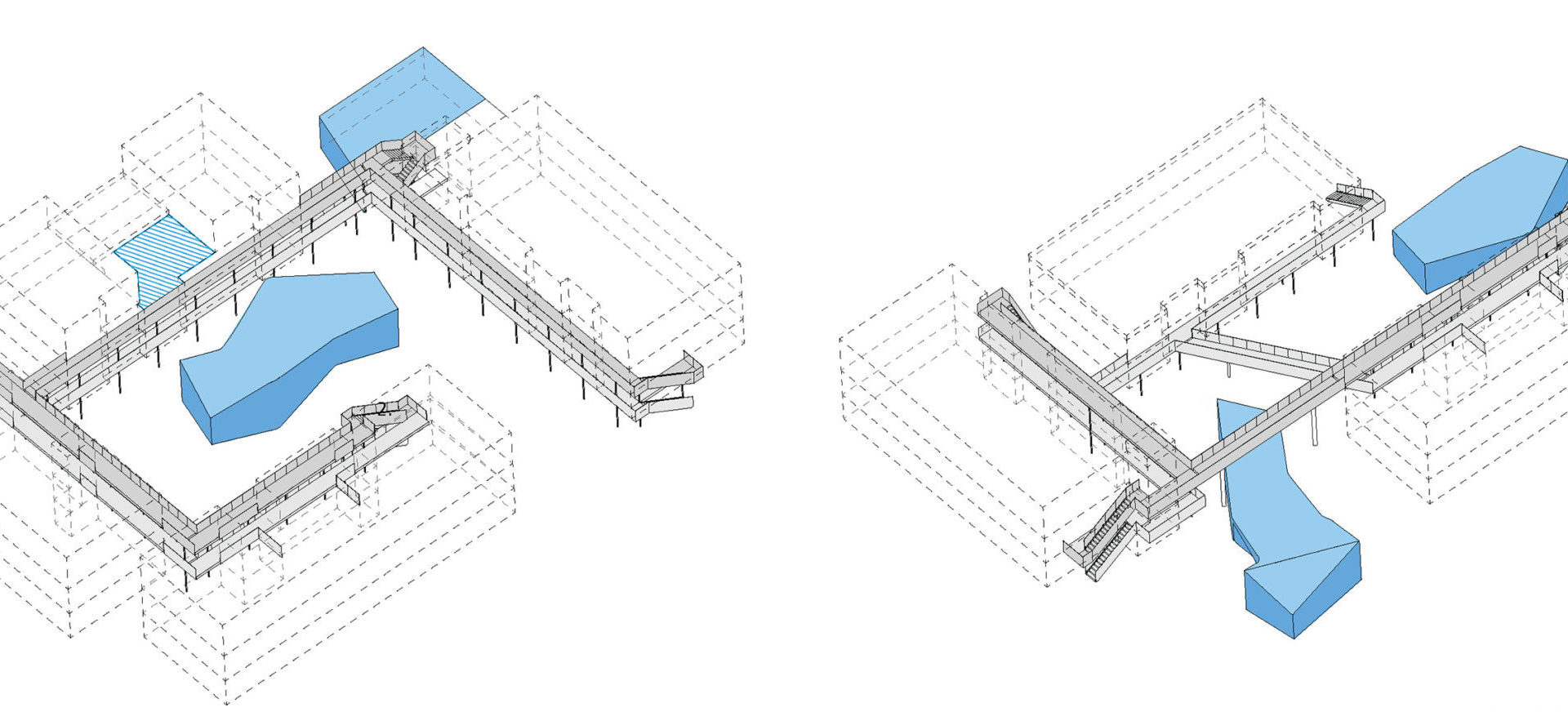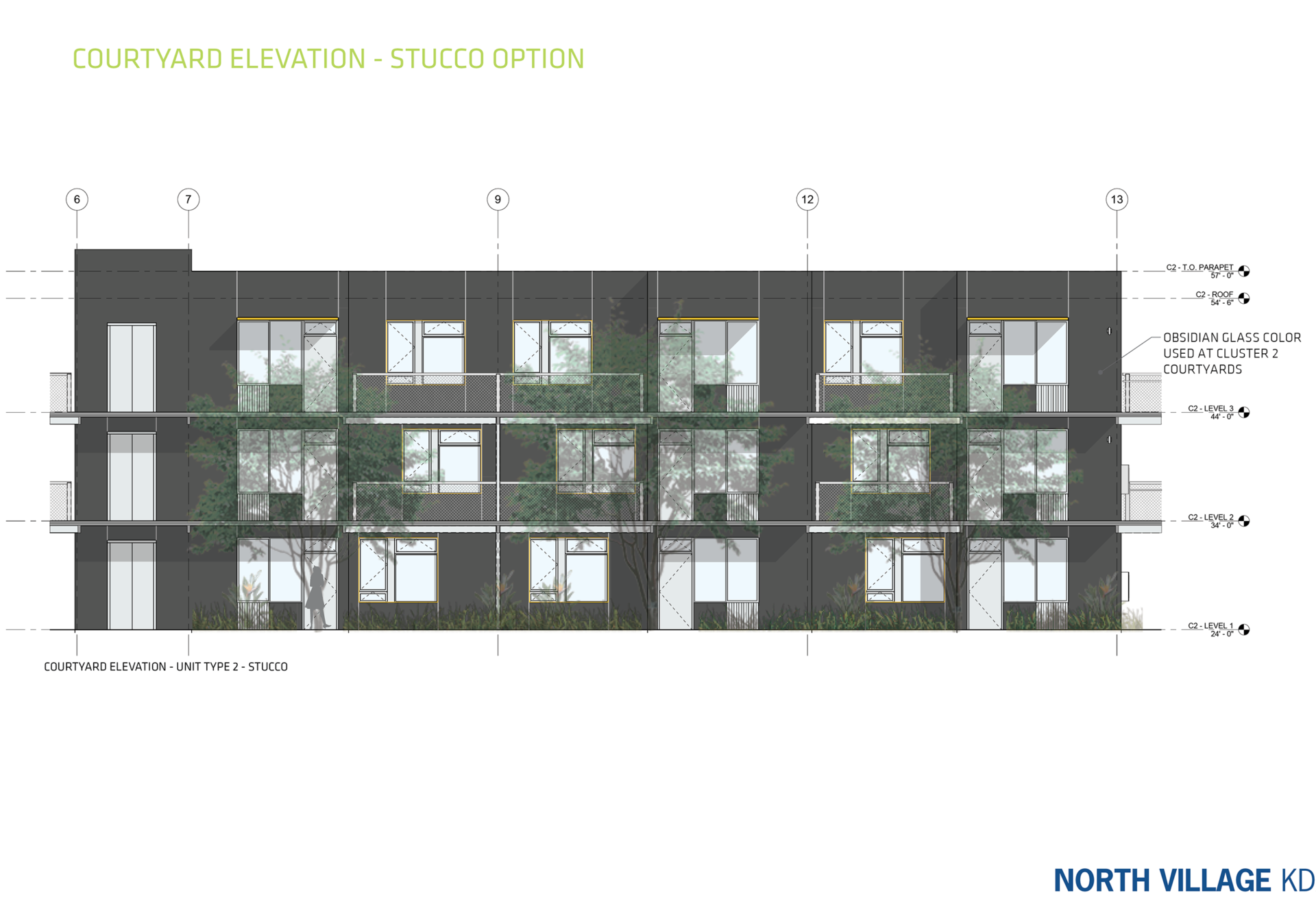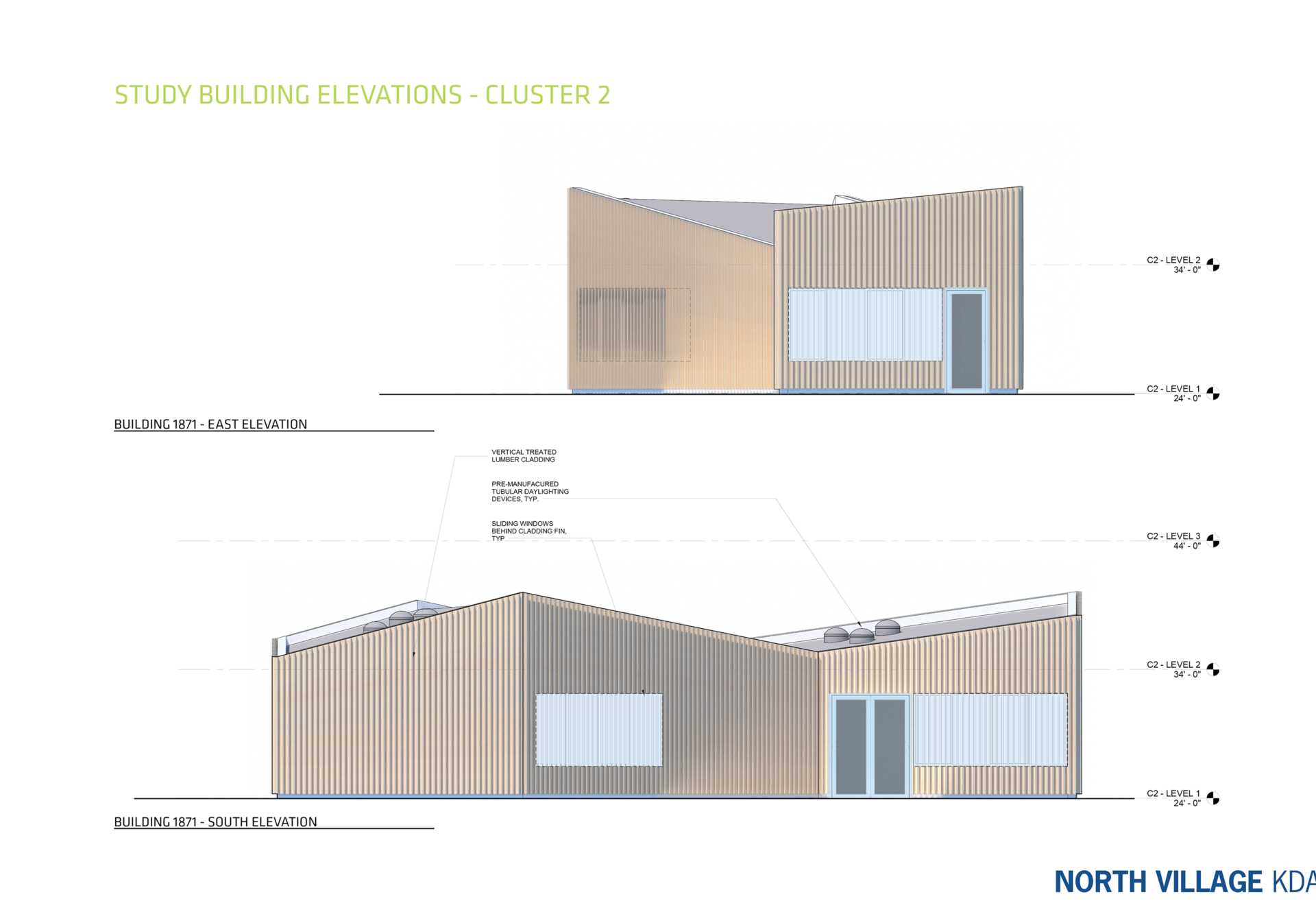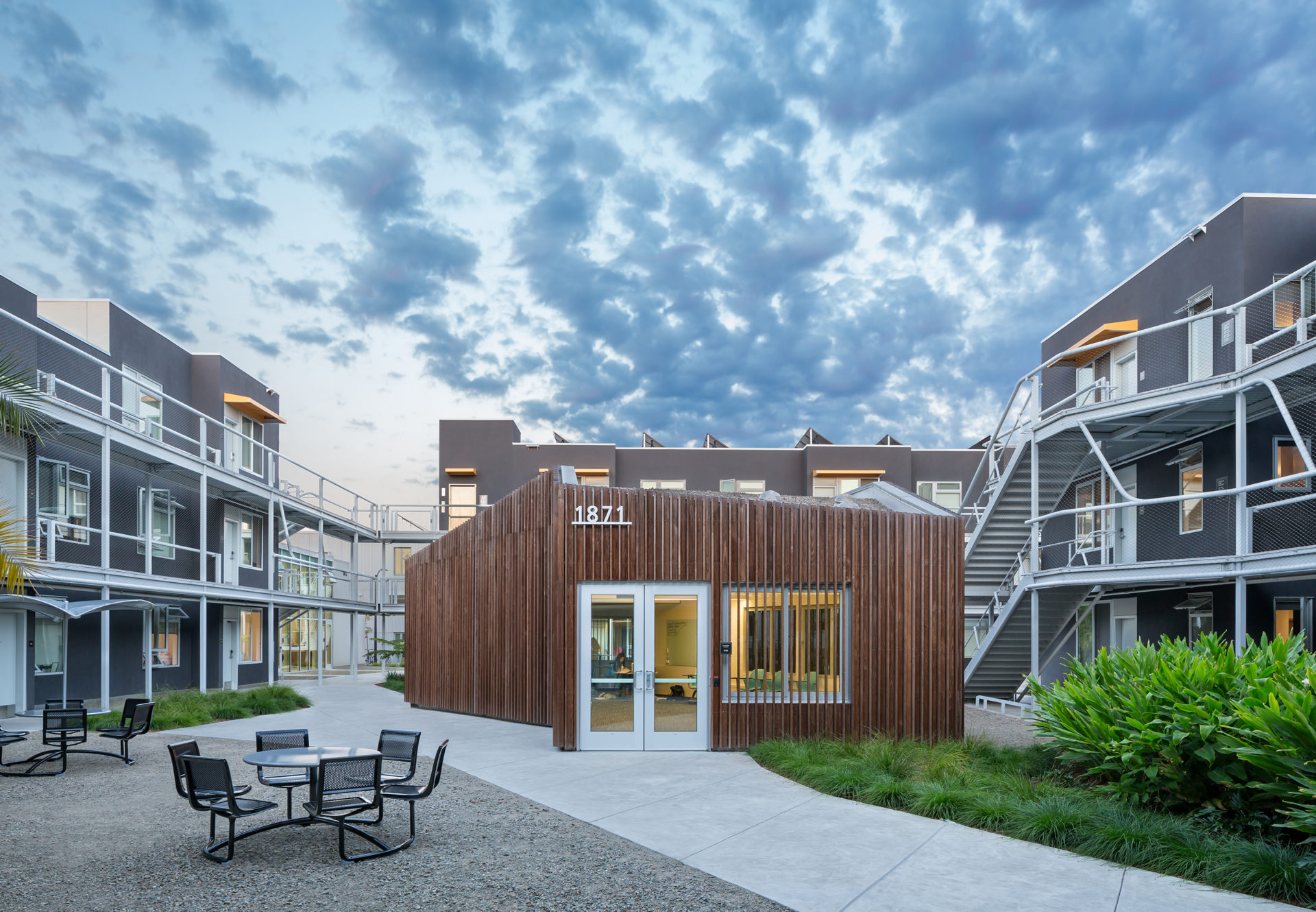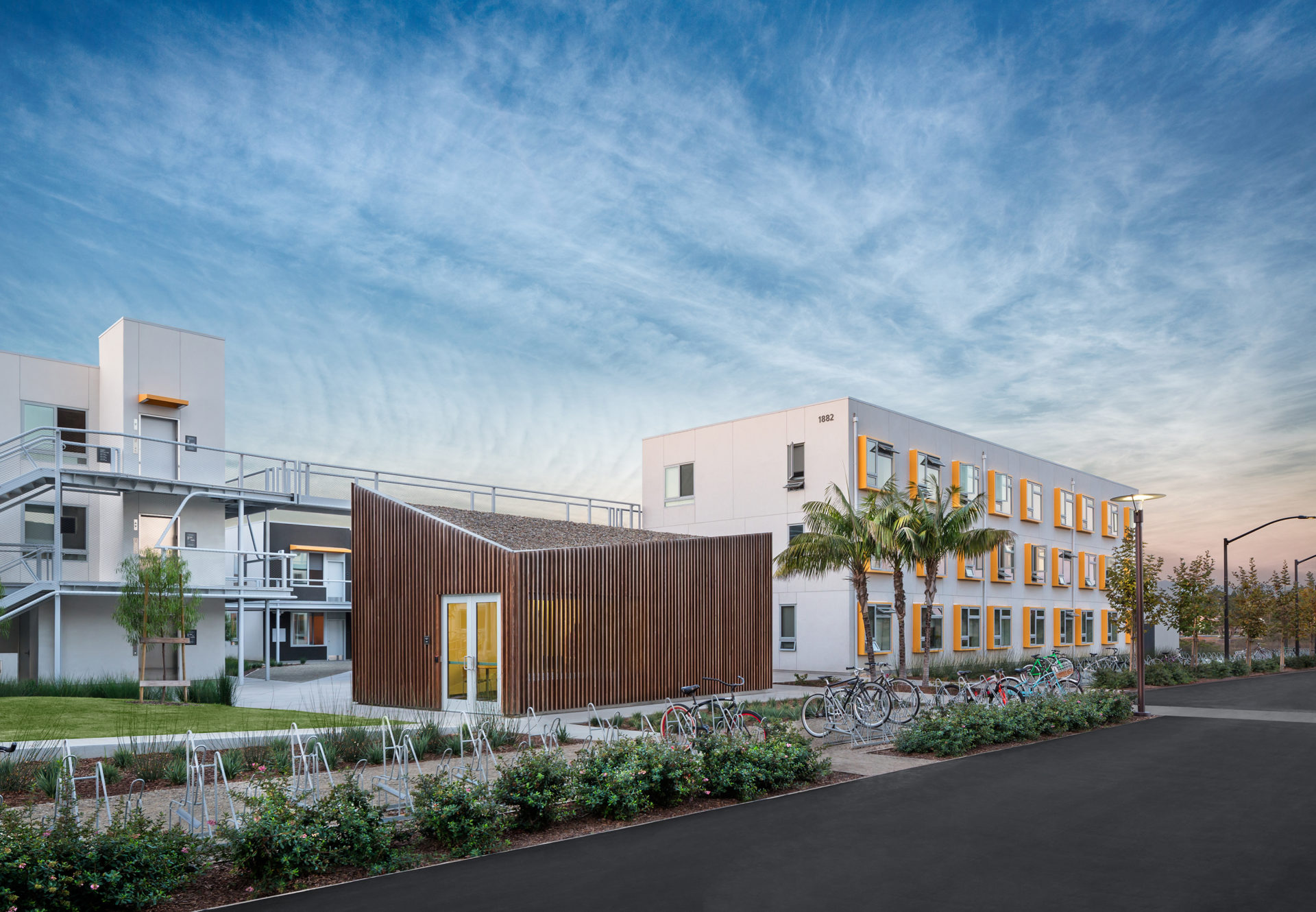- 2019 National AIA Housing Award
- 2018 AIALA Residential Award
- 2018 AIACC Residential Design Award
UCSB San Joaquin Village Housing
- Location Santa Barbara, CA
- Type Housing
- Area 80,000SF
- Completion 2017
- Client UCSB
As the University of California, Santa Barbara, continued to grow, the administration wanted to give every undergraduate student the opportunity to live in campus housing. kevin daly Architects worked with three other firms to create a joint master plan, the components of which were subsequently designed and built by each firm in order to create an architecturally diverse village that feels as if it developed organically over time. The project has been certified LEED Platinum — the highest LEED certification possible (~5% of LEED-qualifying projects receive this designation).
kdA designed two distinct neighborhood “clusters” for the neighborhood. A rigorous riff on the dingbat apartments that make up much of UCSB’s student neighborhood, the three-bedroom units help students learn to live independently while still having the support of food and other campus housing services. These 3- bedroom units come in two basic shapes- skinny and wide- allowing the buildings to be arrayed as asymmetrical courtyards, creating open corners and encouraging informal pedestrian connections. Outside, exterior walkways act as sun shading and encourage students onto these continuous porches. Social spaces are woven among buildings, encouraging student interaction throughout the day. These neighborhoods are intended for students learning to live independently and provide characteristics of both dorm and apartment, encouraging shared cooked meals and visitors without compromising the privacy of each shared bedroom
Site & Urban Context
This housing project was part of a broader environmental reconsideration of university property. The site is adjacent to a huge wetlands and bike path (an important boundary condition), and directly below the flight path of a regional airport and subject to species-specific nesting bird restrictions, including California Swallows.
Formal Architectural Strategy
The challenges of designing hybrid housing were met by kdA’s clever orientation of unit plans that rotate to create variety in the cluster forms, a construction process that maintained the variety cluster to cluster but was uniform in its sequence, and a design that balances the need for efficiency while fostering creativity and inclusivity. A key design component was the development of community building connections that are physically manifested via the centrally located gathering commons and exterior paths and bridges linking the dorms.
- 2019 National AIA Housing Award
- 2018 AIALA Residential Award
- 2018 AIACC Residential Design Award

